DMZ & JSA, The Most Unique Tour Combination!
Korea has a very sad belt line, DMZ at the middle of its main land. Both South and North are still in the war circumstance now. This is the only area people can go see THE WAR. The very peaceful, quiet war, it is. People might wonder if it can be safe to visit this area. No worries, it is very safe. All you need to do there is to listen to your guide, be careful with a few simple rules, and enjoy your tour.
People can feel the highest tension going through the armed guards from both sides there. IT IS AT WAR NOW. Why don’t you come to join this tour to get to know about this big issue going on for real?
DMZ is the safest war zone existing in the world. South and North Korea are technically still at war, having agreed on ceasefire since 1953. Therefore this area still has military facilities including 4 infiltration tunnels. Visitors can go inside the 3rd infiltration tunnel made by North Korea during the tour, Gaeseong industrial complex, the symbol of South and North Korea economic cooperation, and Dorasan train station linked to Gaeseong complex as well.
JSA is a neutral location where exchanges and negotiations between the North and South take place under the authority of the UN. It is located inside the DMZ, and it is the most forward location in the DMZ that can be visited by civilians.
|
DMZ(The 3rd Infiltration Tunnel Tour) & JSA(Panmunjeom) Tour Minimum Pax: 1 Regulation |
DMZ Story, the safest battlefield in the world
Demilitarized Zone, only exist in Korea. The world 11th economy by GDP is still on ceasefire. It is not finished yet. They guard against each other on only 8 km distance. But it is the most wanted visit places of foreigners visiting Korea. How irony is that? You don’t have to worry about safety. More than one million people are visiting this place and even US president and Hollywood movie stars are visiting this place as well.
There is a tunnel to be used during the battle. Of the 4 tunnel, closest tunnel from Seoul is 3rd tunnel. It might be very thrilled experience for you. You may see the North Korea by telescope. It is about 40 minutes away from Seoul and you may reach it by public transportation (takes about 2 hours since it is isolated place). Easier way to visit this place is take daily tour to DMZ, organized by city tour agencies. You will have English tour guide explain about this place as well. They close on every Mondays. If you want to join DMZ tour, just search DMZ tour, DMZ Korea, DMZ South Korea or South Korea DMZ tour on Google. You will find travel agency where operates DMZ tour regularly.
Tips!
Korea was almost destoyed by Korean War in 1950. Korea was the one of poorest countries in the world. However, it became the world 11th economy by GDP. Demilitarized zone was announced to prevent collision between South and North Korea. 8km DMZ area was strictly restricted for about 60 year. By this reason, ironically, it became the perfectly preserved natural site. It has high value in ecology.
Imjingak park (above)
Imjingak park located at 50km northwest of Seoul was built for 5million people who lost home. Major facilities include North Hall where you can get a view of lifestyle of North Korea.
Freedom Bridge (above)
Freedom Bridge is located at 2 kilometers north of Munsan, and it is the only path that connects between the south and north around Imjin river. It was originally the Kyung-eu railway bridge, and reconstructed to the road bridge later.
DMZ Exhibition Hall & Theater
The 3rd Infiltration Tunnel
The third tunnel was discovered in October of 1978. 1.95 meters high, 2.1 meters wide and 1,635 meters long, it penetrates 435 meters south of the military demarcation line and ends at the Truce Village of Panmunjeom.
Dora-Observatory
From Dora Observatory, tourists can view the North Korean propaganda village in the DMZ and as far north as the city of Gaeseong.
Meaning of a border
The border area between South and North Korea is called by DMZ(De-Militarized Zone), CCZ(Civilian Control Zone) or CCA (Civilian Control Area).
The military demarcation line was established according to the Armistice Agreement in 27 July 1953. DMZ is the place formed by the agreement that both parties should retreat 2km from the line.
Total 1,292 signboards of the Military Demarcation Line were established from Imjin riverside to the east coast. 696 signboards have been controlled by the U.N. Forces and the rest are under the control of North Korea and China. Contrary to the Armistice Agreement, both parties have not observed the principle that they should retreat 2km from the line.
Background of DMZ
Korea was liberated from the invasion in Aug.1945 as Japan surrendered and it resulted in the end of World War II. U.S. had started to confront with U.S.S.R about how to manage Japan and Korea after war.
The reason of opposition is that they have different opinion and hold each other in check; U.S dreamed about domination of the world and U.S.S.R had grown up to a powerful country. Also, trusteeship and divided occupying, which U.S planned as the way of resolution for the Korean Peninsula, was one of restraint. The 38th Parallel, which had decided by U.S one-sidely, was agreed by U.S.S.R on 16 Aug.1945. This is the beginning of direct opposition each other.
The Korean Peninsula was divided into two, South and North, which have its own government in 1948 and 6.25 War broke out in 1950. After that, the Armistice Agreement was put the seal in July 1953. The armistice line is the troop disposition line of truce that is installed by the mutual consents among a supreme commander of the U.N., a commander of people’s army of North Korea and a commander of people support army of China. In accordance with Clause 1, Art. 01 of the Korea Armistice Agreement, there should be one military demarcation line and both parties had to retreat 2km from the line. The armistice line is the same as the military demarcation line, which reaches 248km(155mile) to the land and around 200km to the west coast.
DMZ is the place where entrance and exit or development has restricted for the purpose of military for ages. In other words, DMZ is a neutral zone whose gross area is around 30~40km including 4km(2km X 2) of DMZ and the civilian control zone, (5~20km X 2).
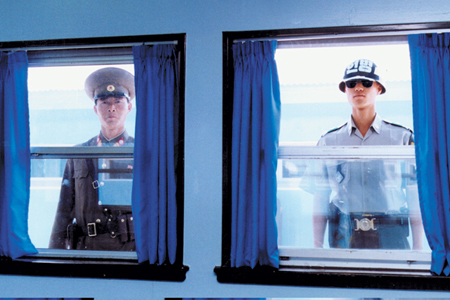
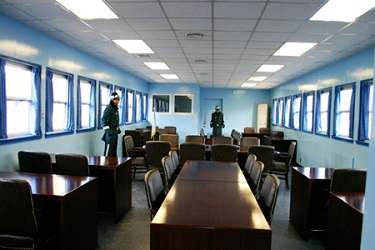
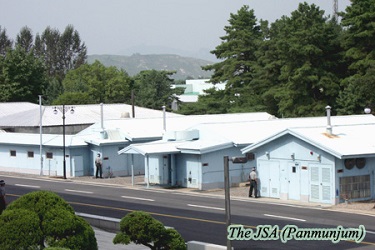
J.S.A
JSA resembles a square measuring about 800 meters in diameter. After the Armistice Agreement was signed, JSA became a neutral location where the guards from both sides were allowed to move about freely. It was the only place in the DMZ where the MDL was originally not cleared marked. That changed after North Korean guards murdered two UNC officers with axes on 18 August 1976. After the Ax Murder incident, the MDL was marked within JSA, and that marking system continues until today. Today, the only place where border crossings are allowed is inside the conference buildings of the Military Armistice Commission(MAC). The MDL in JSA is marked with one hundred and twenty-six 1 meter-high white stakes, along the boundary line a 10-meter interval. In the rest of the DMZ, the boundary is marked with MDL Markers. Each side owns six guard posts in JSA and on more than thirty-five armed guards can be present on each side. JSA is a venue for exchanges and negotiations between the North and South. All kinds of political and economic issue, cultural conferences and Red Cross meetings are held in JSA.
Panmunjeom is located inside the Demilitarized Zone (DMZ), and it is the most forward location in the DMZ that can be visited by civilians. Although Panmunjeom is the common name of the area, the official name of the negotiating site is the Joint Security Area (JSA). Panmumjom is located in the western portion of the 155-mile long DMZ on the Military Demarcation Line (MDL) and it demonstrates the great sorrow of the divided country. Panmumjeom is located 62 kilometers northwest of Seoul, the capital of South Korea, and 215 kilometers south of Pyongyang, the capital of North Korea, 10 kilometers from Kaesong.
Panmun Gak is the main building managed by the North Koreans in JSA. It is located about 80meters north of the Freedom House. It was constructed in September 1969 and is used as an office and command post for the North Korean guard force and as a stand by room for MAC meeting attendees. It is also used as a place for propaganda and instigation activities directed against the South. Every August 15th, a mass propaganda rally is held in front of this building under the name of the “8.15 Pan-National Rally”.
The “Bridge of No Return” is located at the west end of the JSA and is bisected by the MDL. In front of the “Bridge of No Return” is also where the tragic Ax Murder Incident occurred in 1976. Before the incident, the “Bridge of No Return” was the only pathway connecting North and South. Currently the bridge is blocked off with a wall on the North Korean end. Today, that route goes via the “72 Hours Bridge”. The Brige is called the “72 Hours Bridge” because North Koreans built it in three days. The “Bridge of No Return” got its name from the prisoner repatriation operation after the Armistice Agreement was signed . The prisoners were exchanged across this bridge and given a choice to either cross the bridge to return to their original country or to remain on the side of their captors. However, once they crossed the bridge, they were not allowed to cross back to the other side and hence the name the “Bridge of No Return”. The numbers of the prisoners exchanged from 5 August to 6 September 1953 were 13,444 UNC and 82,493 Communist troops. The guard posts on each side of the bridge were the setting for the popular korean movie “JSA”.
|
DMZ(The 3rd Infiltration Tunnel Tour) & JSA (Panmunjeom) Tour Minimum Pax: 1 Regulation |
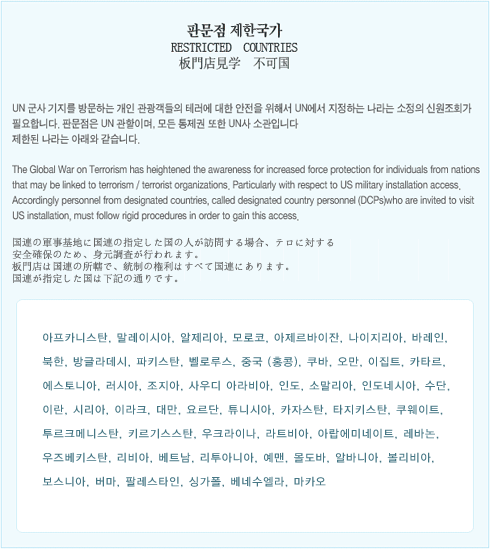 |


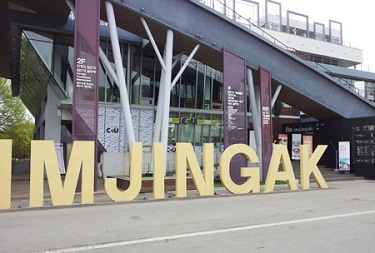
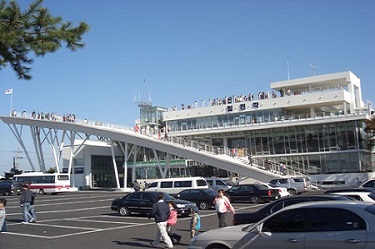

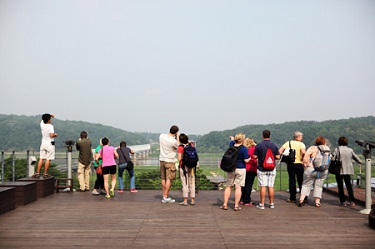
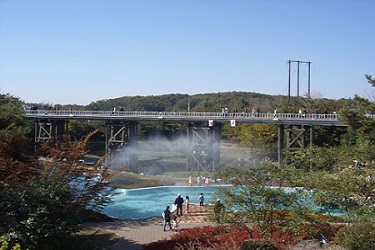
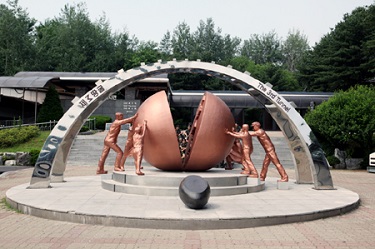

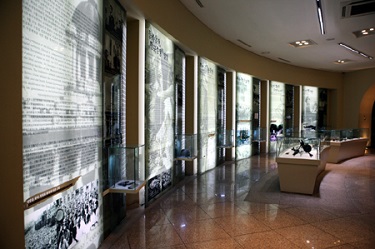

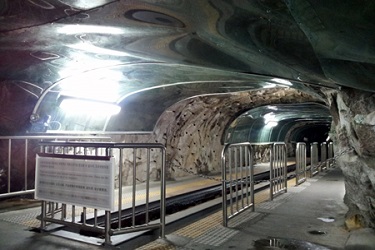




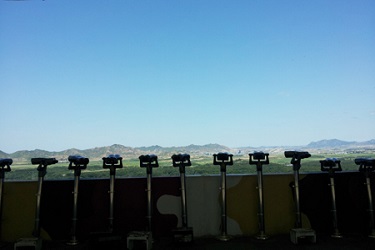
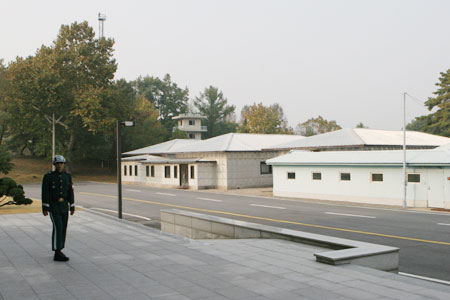
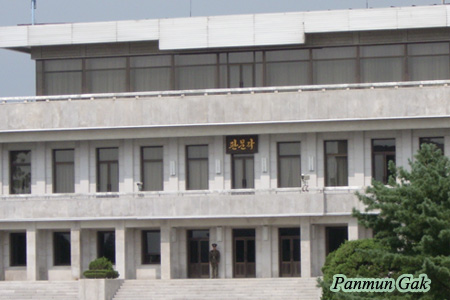
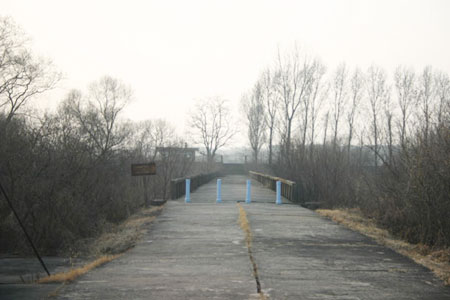


The guide was very entertaining and full of information. Going to the DMZ was quite an experience and really brought home the sadness of the Korean War even after all these years. We strongly recommend including the JSA Tour. We weren’t in the blue building a long time but it was worth the trip. Was awesome seeing US troops at work and being able to tell them how much we appreciate their service. The DMZ tour was in the morning, then the group was split for those going on for the JSA tour. Some of the morning DMZ group did not know they had to plan in advance for JSA so please make a note that you must plan ahead. For Viator we had to send passports 7 days in advance. Once in South Korea the guide said you had to submit passports a minimum of 48 hrs in advance. You can’t decide at the last minute you want to go and you’ll wish you had made plans for this once in a lifetime experience.
A highly informative and fascinating tour providing a solid background to those not familiar with the history of the area. The tour is run in two parts: the DMZ/3rd Tunnel in the morning and the JSA/Panmunjom after lunch where the tour group composition may change (various tour operators need to work with others so that there is a consolidated group to visit the JSA). The tour guides were very knowledgeable and had excellent English, the second was very firm (almost militaristic in style) yet still highly informative. The highlight was the JSA part of the tour where I visited the T2 building installation. While it was a little tense with all the rules and strict instructions – I learned a lot on this tour on the 38th Parallel – highly recommended.
This tour was so fascinating and informative. The tour is split into two parts; DMZ and JSA. I would say that if you can’t fit in a full day tour; doing the DMZ tour is still an eye-opener.
It was slightly unorganized in the morning because there were a couple of tour buses/different tour groups at the pick-up point however, everything ran smoothly afterwards.
Our guide for DMZ was Sunny and she was wonderful. She spoke very clearly and was very informative. The tour runs on a very tight schedule. E.g. 20mins for particular places and you have to come back to the bus at a particular time. However, this made it run very smoothly and we were able to do everything because we arrived to places early and avoided the crowd.
I really enjoyed this tour. JSA part of the tour was much more intense because the security check is much higher. Please follow the dress code they give as they do check it on the second part(JSA) of the tour. Plain t-shirts are fine. It was a hot day but the coach had air-con so that made the bus ride comfortable.
Overall, if you have time, I’d definitely recommend the full day tour because with the JSA part, you get to go into the meeting room and also stand across from the boarder line. From where we stood on the steps, we saw a North Korean soldier looking through binoculars! This tour is definitely unforgettable and heart breaking.
Great tour, well executed. Pick-up and drop off were spot on. The real compelling part of the tour is the JSA component in Panmunjom. Able to visit the conference room where negotiations occur and momentarily stand in North Korea. Note that tour availability is subject to political and other considerations but we got lucky on our visit.
The DMZ was very interesting as well. Perhaps one too many spots – Mt. Dora observatory was more of a gift shop than an observation point. More warning re: the conditions in the 3rd infiltration tunnel might have been helpful. A 350m descent (and climb) @ an 11 deg grade to a runnel that is 250m long and no more than 2m x 1m in size. Quite a workout and squeeze.
Lunch was great and recommended on this particular trip as there aren’t a tremendous amount of options in the DMZ.
Your guide was well informed, pleasant, and had a decent command of English which made the tour both informative and interestiing
Michelle our tour guide was knowledgeable, informative and entertaining in her rapid-fire delivery. To have personal attention helps to bring the reality of the place to life. One cannot help but feel a frisson of fear to see armed soldiers squatting in ditches and mine danger signs behind barbed wire fences. To walk along the third tunnel and ascend to the surface is a worthwhile experience, as is the view over the observatory wall. The huge, empty station is a testament to man’s hope for peace and unity. I was unable to attend the JSA Panmunjon Touw and so cannot comment on that.
This was definitely the highlight of my time in South Korea and one of the most interesting travel experiences I’ve ever had. I’d highly recommend doing the full day (+ JSA/Panmunjom) tour; you’d really be missing out on the best parts of the experience if you only do the half-day. The tour was very professionally run and the included lunch was decent.
Not going to lie, there were parts of the tour that got my adrenaline pumping–for example: when we were instructed to “stay on the sidewalk so you don’t step on landmines.” The second half of the tour is partially run by the United Nations Command, Military Armistice Commission (UNCMAC) and you’ll be accompanied by US military personnel. You’ll have an opportunity to purchase North Korean wine, whiskey, and money, and there are (enough) times when you’ll be allowed to take photos, but it’s certainly restricted.